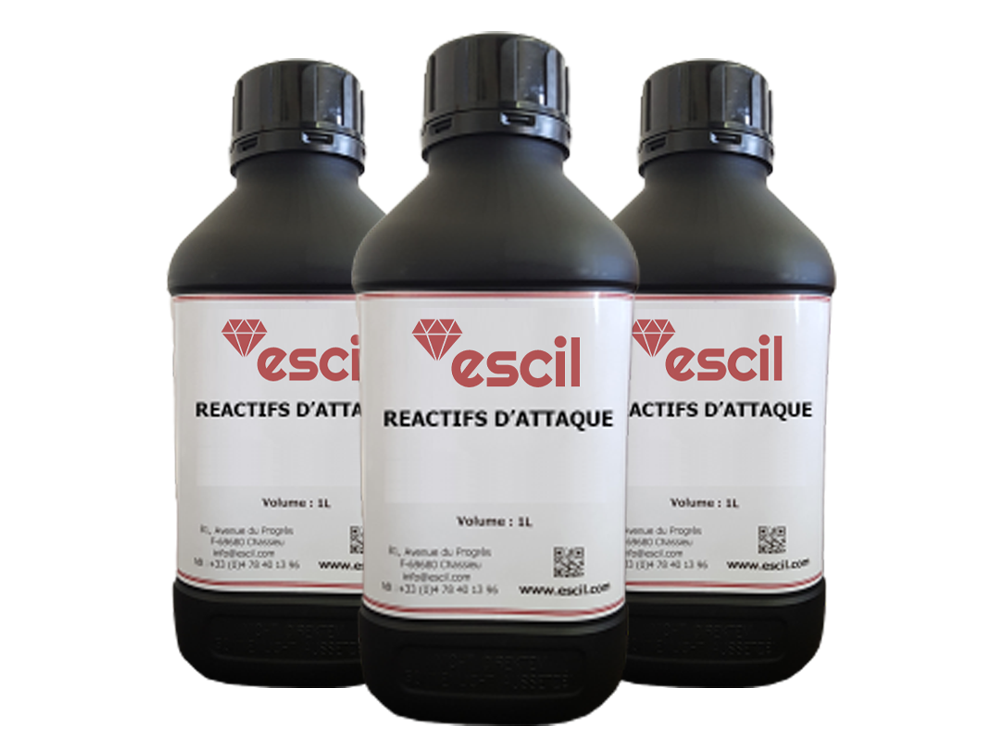The use of etching reagents is intended to reveal the structure of a material following the preparation of its surface.
Essentially adapted to the study of ferrous and non-ferrous metallic materials, our range includes two main categories of products:
- Chemical etching reagents, which are used by simple contact with the surface of the part to be analyzed.
- Electrolytes, which can both polish the material and/or etch it. They require the passage of an electric current through the specimen generated by an electrolytic polishing machine.
They are chosen according to the nature of the material and the type of examination to be carried out.
Within the framework of a microscopic examination, also called micrographic examination, the reagents reveal the internal structure of the material by highlighting its phases and constituents, the size of the metal grain, the presence of carbides or inclusions…
In a macrographic examination of the part, i.e. at lower magnification, structural manufacturing heterogeneities such as the direction of fiberization, segregation phenomena, heat-affected zones (HAZ) of welds, etc., will be highlighted.
The manufacture of our reagents is based on standardized formulations. Containers are adapted to the chemical composition of the products and are labeled according to regulations with pictograms and information necessary for user safety. We make sure that the safety data sheets for each reagent are updated and sent to you. For etching products whose use requires a special process, an instruction note is available on request.




